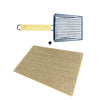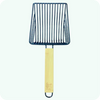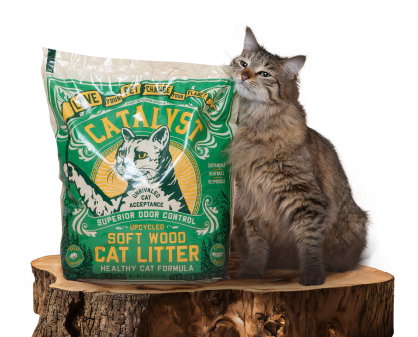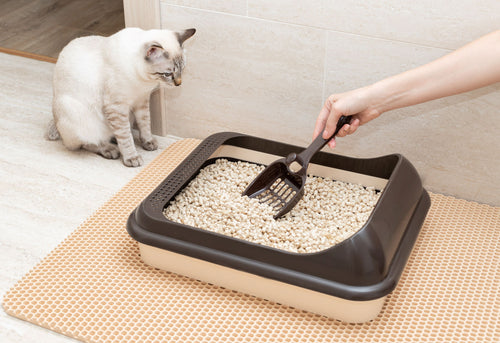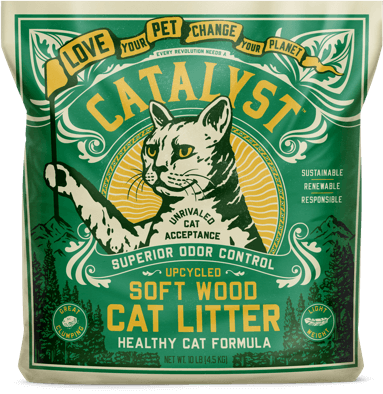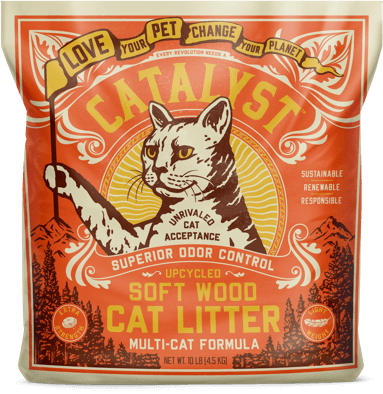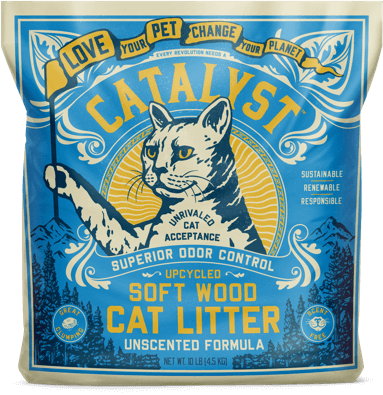Welcoming a furry feline into your home? Here are some tips and ideas to help make the transition as smooth as possible.
If you're interested in adopting a pet, you’re not alone. Last year, shelter adoption rates increased by 12%, making it clear more people are looking for furry friends to join their respective families.

While bringing a cat into your home is a wonderful experience, the transition period to make sure they feel comfortable can take time and extra care. The transition can be particularly challenging if the cat is older and “finicky” to a certain extent.
Make sure to give them their own area – maybe a room, bathroom, or large closet – with all of their things so they can get used to their new environment. Give them one or two days to get used to the area, especially if there’s another furry family member already in the house.
Along with providing a welcoming environment, it’s important to make sure you have all the right kitty gear to ensure your cat is safe, fed, and most of all, happy. Below are a few items to have on hand before your new family member comes to their new and fur-ever home.
Microchip:
It is important to ensure your cat is microchipped and registered, your veterinarian can help with this. Microchipping provides cat identification should your kitty get lost. Most vets, shelters and humane societies will scan an animal that comes into their care.
Litter:
No matter the cat, they’re going to need to do their business. For this, we recommend (what else?) Catalyst Pet! Our odor-absorbing sustainable cat litter is engineered from upcylced soft wood fiber, making it a safe choice for you, your pet and the planet. Catalyst comes in three formulas: Healthy Cat, Multi Cat, and Unscented. For kittens and cats with skin sensitivities, we recommend the Unscented formula.
Litter Box, Scoop, and Tracking Pad:
Since Catalyst is free of harmful dust, challenges with airborne dust will not be an issue. If you get the impression your new cat is quite active, we recommend using a higher sided box and a tracking pad to help reduce tracking. (Catalyst tracks less than most litters.)
Food:
Try to get the same cat food brand that your cat or kitten is used to in order to make them feel comfortable, as well as to avoid them getting an upset stomach. If you want to change their food, we recommend adding it in slowly to keep their digestive system happy and your carpets clean!
Food and Water Bowls:
Get your cat some nice bowls for drinking and eating out of. Consider getting a couple of water bowls and putting them in different areas throughout the house to make sure they stay hydrated.
Toys and Scratchers:
Toys will offer your cat a chance to exercise and get mentally stimulated, something so important to their overall health and wellbeing. Scratchers are also fun, and they help keep cats from going after the furniture.

Bed:
In our opinion, the cozier the better!
Beauty Supplies:
Make sure to purchase a brush, which will help keep your cat’s coat shiny and fluffy. And, for the sake of your cat and your furniture, make sure to invest in some nail trimmers. Your vet can show you how to safely clip and avoid the quick.
Collar and Tag:
Outside of the obvious fashion statement, it’s a good idea for your new furry pal to have some identification in case they decide to go on an unexpected adventure! For outdoor cats, make sure it’s a breakaway collar that is reflective with a bell. Not only will these features help keep your cat safe, but those sweet little birds too!
These are just a few recommended items to get you started on your cat journey with your new furry friend. As time goes on, you may want to explore more gear to keep them entertained, happy, and healthy.
